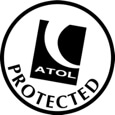Have you considered structuring the sale of your business in a way that motivates employees, as well as being tax efficient? If so, a sale to an Employee Ownership Trust (EOT) might be an option for you.
In recent years, the idea of selling your business to an EOT has become more widely known, which could be partially linked to the reduction in the lifetime limit for Business Asset Disposal Relief. This was reduced from a limit of £10m per individual to £1m in March 2020. This relief provides a tax rate of 10% on qualifying disposals, and the reduction is likely to mean that more business owners selling high value companies pay most of their Capital Gains Tax at a rate of 20%.
What is an EOT and what are its benefits?
An EOT involves selling the company to a trust that is established for the benefit of all employees of a trading company. If structured correctly, an EOT sale can provide a Capital Gains Tax rate of 0% for the selling shareholders.
This 0% tax rate can only be achieved if the EOT acquires a controlling interest in the company (more than 50%). There are no size limits for EOTs, so businesses of varying sizes can be eligible for the relief. However, the business must be classed as a trading business, and there are other conditions that must also be met and reviewed in detail.
How do the employees benefit?
Qualifying disposals to EOTs allow income tax free bonuses of up to £3,600 per year to be paid to each employee. These bonuses are still subject to national insurance.
Studies have also shown that EOT sales can have the benefit of motivating employees to drive the business forward and improve employee engagement, therefore leading to improved business performance and growth. This is likely due to the fact that they indirectly own an interest in the business after the sale.
Once the selling shareholders have been repaid, employees can potentially benefit from profit-based pay and bonuses, making it an exciting opportunity for them.
How is an EOT funded?
As the trust is a new trust set up for the sale, initially it will have no cash. Part of an EOT may involve the trading company gifting the EOT surplus funds to pay the transaction price, and/or third-party lending may be sought, as well as some of the consideration potentially being on deferred terms.
What are some of the considerations of an EOT?
- Stamp duty - the EOT will pay stamp duty on the transfer of shares, equal to 0.5% of the value of the shares transferred.
- An EOT sale can only provide a 0% tax rate on the first sale. Therefore, if a 60% stake was sold to the EOT with a further 40% being sold at a later date, the 40% stake wouldn’t qualify for the 0% tax rate.
- A valuation will be required of the trading company in order to allow the EOT to pay a fair market value for the shares being sold. An EOT has a fixed purchase price, meaning the sellers would not benefit from any growth in company value after the point of sale, even if they stay involved with the business.
Recent potential developments in the EOT rules
In April 2023 the Government published various technical proposals and consultations on Tax Administration and Maintenance Day. Part of this publication stated that later this year the Government will publish a consultation on EOTs to “ensure that the reliefs are targeted closely at incentivising EOTs as an employee ownership business model whilst preventing the reliefs from being used for unintended tax planning.” Read the policy paper, Summary of tax administration and maintenance: Spring 2023.
In addition to this, towards the end of 2022 the Chartered Institute of Taxation (CIOT) wrote to the Government about the future of EOTs. Read CIOT's Employee Ownership Trusts Autumn Budget 2021 representation on enhancement and anti-abuse measures, funding and other tax issues.
One matter they wrote about was the use of offshore trusts. Technically, the 0% tax rate is a deferral of CGT, which can be clawed back if the trustees sell their shares. Using an offshore trust could therefore potentially be used to prevent a clawback if there is a sale to a third party. CIOT are therefore recommending that HMRC insist that trustees are UK based to ensure the CGT isn’t avoided.
There was also a suggestion for amendments as to who might be an EOT Trustee, particularly regarding preventing former owners forming a majority on the trustee board. At the moment the Board could just have one trustee, the seller, which CIOT have put forward doesn’t really follow the principle of an EOT sale. We will wait to see what is in the consultation, but we presume both of those points will warrant the Government’s consideration.
The above implies that the Government may be looking at EOTs more closely to ensure that the main motive for the sale to an EOT is to benefit the employees (which is their intended purpose), rather than improving the sellers’ tax positions.
Any shareholders considering a potential sale to an EOT should keep this in mind and ensure that their reasons for selling to an EOT are in line with what the legislation is intended to encourage, being that the sale is primarily for the benefit of the company’s employees.
EOT sales may not suit all business owners as each owner and company has their own individual set of circumstances. Therefore, both legal and tax advice should be sought in the early stages to establish that a sale to an EOT is an option that works for everyone involved.
If you have any questions about the above, or would like more information specific to your circumstances, please enter your email address below and we will get in touch:
Related View All














